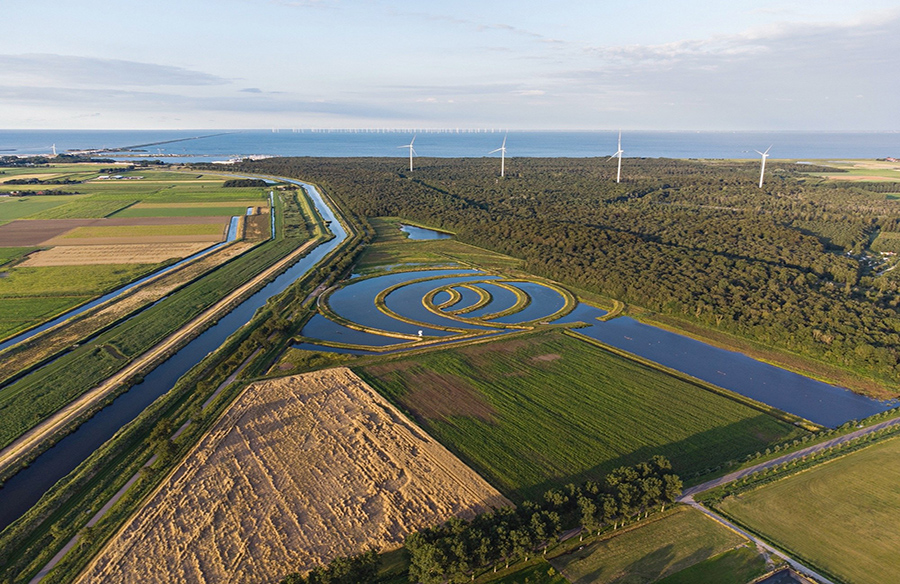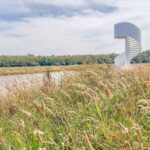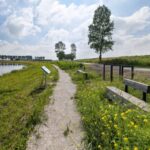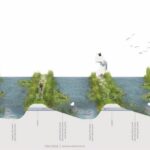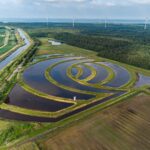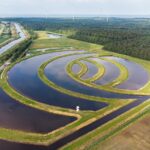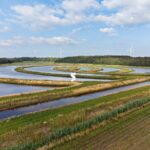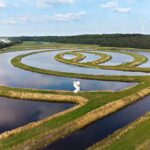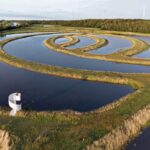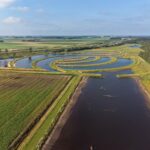Fish Cycle Wieringermeer, envisioned by HOSPER Landscape Architecture and Urban Design, garnered a Special Mention in Infrastructure Projects at LILA 2023. Serving as a vital fish habitat, it acts as a crucial ecological link connecting the Amstelmeer canal to the water system of the polder.
Blending Playful Design and Ecological Measures
This project seamlessly integrates a playful approach to design with technical and ecological measures. The design’s authenticity lies in its consciously artificial structure, embracing its anthropogenic origins without feigning natural aesthetics. Instead, it focuses on fostering a biodiverse water habitat, vital for sustaining fish populations.
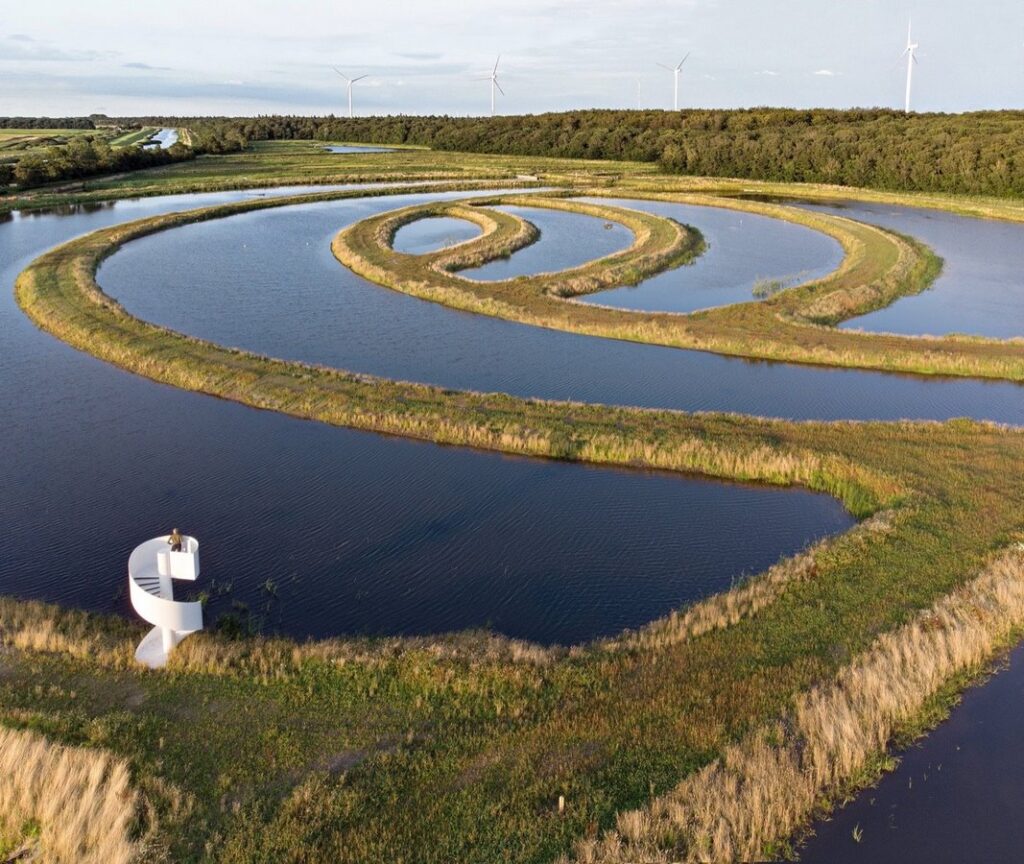
Interweaving Landscape, Art, and Ecology
Nestled within the agricultural landscape of Wieringermeer, Fish Cycle Wieringermeer embodies a harmonious fusion of landscape architecture, art, and ecology. Rooted in artistic landscape design, the project lays the groundwork for fostering high nature values while providing a nurturing habitat for fish. This symbiotic blend creates a contemporary ‘landmark’ that celebrates the intersection of nature and human ingenuity.
Conceptual Framework
The ‘Fish Cycle’ concept encapsulates the lifecycle of fish within this habitat, akin to the ripples formed by stones cast into water. This thematic inspiration manifests in the visual portrayal of water flowing in circular patterns throughout the landscape, creating a captivating aesthetic.
Spectacular Simplicity in Design
The design’s brilliance lies in its simplicity, with clear, expansive circles echoing the robust dimensions of the polder. Water, grass dikes, reeds, and various underwater vegetation are thoughtfully integrated, fostering a diverse ecosystem teeming with life.
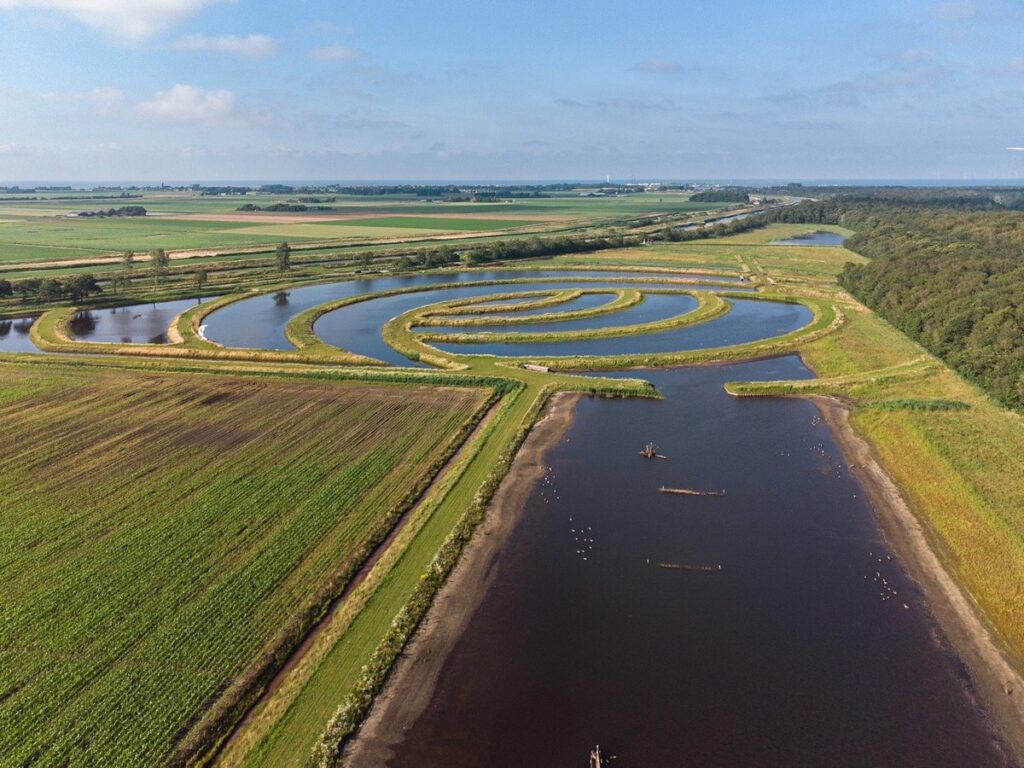
Maximizing Functionality and Impact
Fish Cycle Wieringermeer is not merely an artistic endeavor but a testament to the synergy between design and ecology. It maximizes functionality through innovative features such as fish ladders and siphons, facilitating ecological links and enhancing biodiversity. Moreover, the project’s impact extends beyond its ecological significance, offering a visually striking landscape that invites public engagement and appreciation.
Inviting Exploration and Appreciation
A public grass path traversing the dike connects Wieringerrandweg with the Robbenoord forest, offering visitors an immersive experience amidst nature’s splendor. An observation tower serves as a vantage point, providing panoramic views of the landscape’s expressive shapes and rich biodiversity, including numerous bird species.
Fish Cycle Wieringermeer exemplifies how ecological stewardship and artistic vision can converge to create transformative landscapes that inspire awe and appreciation. Through thoughtful design and meticulous planning, it sets a precedent for sustainable development that prioritizes both aesthetic appeal and ecological integrity.


